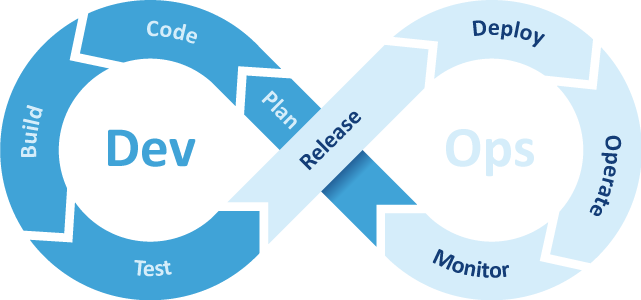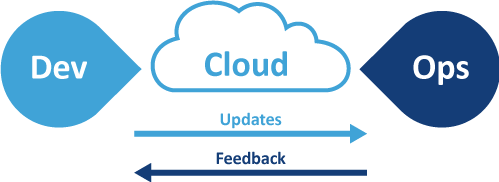Contact · Newsletter · DEUTSCH

DevOps are a combination of people, methods, processes, technologies and tools to create high-quality software products or software-based solutions and to operate them in practice.
The term "DevOps" itself is made up of "Dev" (development) and "Ops" (operations) and thus also refers to cooperative collaboration with the help of agile project management.
The eight typical DevOps phases are often shown in pictures as an endless loop, which the responsible product management,
the development team and the application managers run through again and again as a process chain.
A CI (Continuous Integration, software coding and modification process) and CD (Continuous Delivery, software delivery process) activity pipeline are included in this construct.
All tasks are processed by a developer and an application team.
Plan (Dev + Ops): Determine the goals of a (further) development. Work out which particular resources are needed and how the goals are to be achieved within a timeframe to be determined.
Code (Dev): Software developers generate the code needed for an application or the code changes required for an iteration. At the end of this process step, the new code is then transferred to a repository.
Build (Dev): During the build phase, another developer reviews the modified code in the repository. Various tests are performed (e.g. unit and integration tests). If this review is successful, the complete code base is assembled.
Test (Dev): Test phase in a special deployment environment. The test environment used for this should correspond as closely as possible to the actual application environment.

Release (Dev): Make application version with all components (including component updates, if applicable) available for real-world use.
Deploy (Ops): Deployment of a new application version (if necessary via blue-green deployment with the option of returning to the old version).
Operate (Ops): Measure application quality (objective: optimize collaboration between dev and ops teams through feedback loop).
Monitor (Ops): Monitor application operation in the production environment. Analyzing and evaluating the operational data generates new input for the next planning phase.

DevOps were originally created for IT applications in order to implement new software functions using standardized development and test processes and then to measure user acceptance through monitoring.
Embedded DevOps is less about the continuous development of new software-based product features and more about embedded systems hardware-related integration optimization for special user environments and requirements. This results in numerous differences to conventional DevOps.

A very special challenge is the cooperation between dev and ops teams as well as the remote deployment. In many cases there was one development team and multiple operations teams or distributed operations teams with members in different locations. In addition, on-the-fly deployments are only possible under special conditions, as it involves updating software (firmware) for embedded systems that controls a machine or medical device.
The management of feedback from very different sources also requires adapted methods.
For remote deployment tasks, we offer the DIL/NetPC DNP/8331, an integrable gateway function block that supports embedded DevOps with any microcontroller system in a variety of industrial applications.
The DIL/NetPC DNP/8331 is an embedded gateway device that can be integrated into your own circuits as a plug-in module in DIL-40 format or as a complete CAD library function. Thanks to a sophisticated boot loader and the embedded Debian Linux operating system with A/B boot concept together with various other special functions, the DNP/8331 has above-average system availability and cyber resilience.

A DNP/8331 as an embedded gateway device is suitable, for example, as a link between a globally available update server and the MCUs in industrial sensors to enable embedded DevOps deployments of new firmware releases. In addition, the DNP/8331 supports device monitoring for feedback loops.
We are a manufacturer of industrial sensor systems. Our products are primarily used to monitor the condition of machines and systems. The individual sensors are based on a modular system that can be adapted relatively easily to different customer requirements by our software experts.
We need an integrable gateway function that enables software adjustments to the sensor firmware directly in the field and at the same time corresponds to the current state of the art in terms of cybersecurity.
Furthermore, the gateway function should form the Ethernet interface to our customers' systems and support different protocols such as RFC 1006, Modbus, MQTT and OPC UA.
SSV SOFTWARE SYSTEMS
Dünenweg 5
30419 Hannover
Phone: +49(0)511 · 40 000-0
Fax: +49(0)511 · 40 000-40
© 2026 SSV SOFTWARE SYSTEMS GmbH // All rights reserved.
ISO 9001:2015